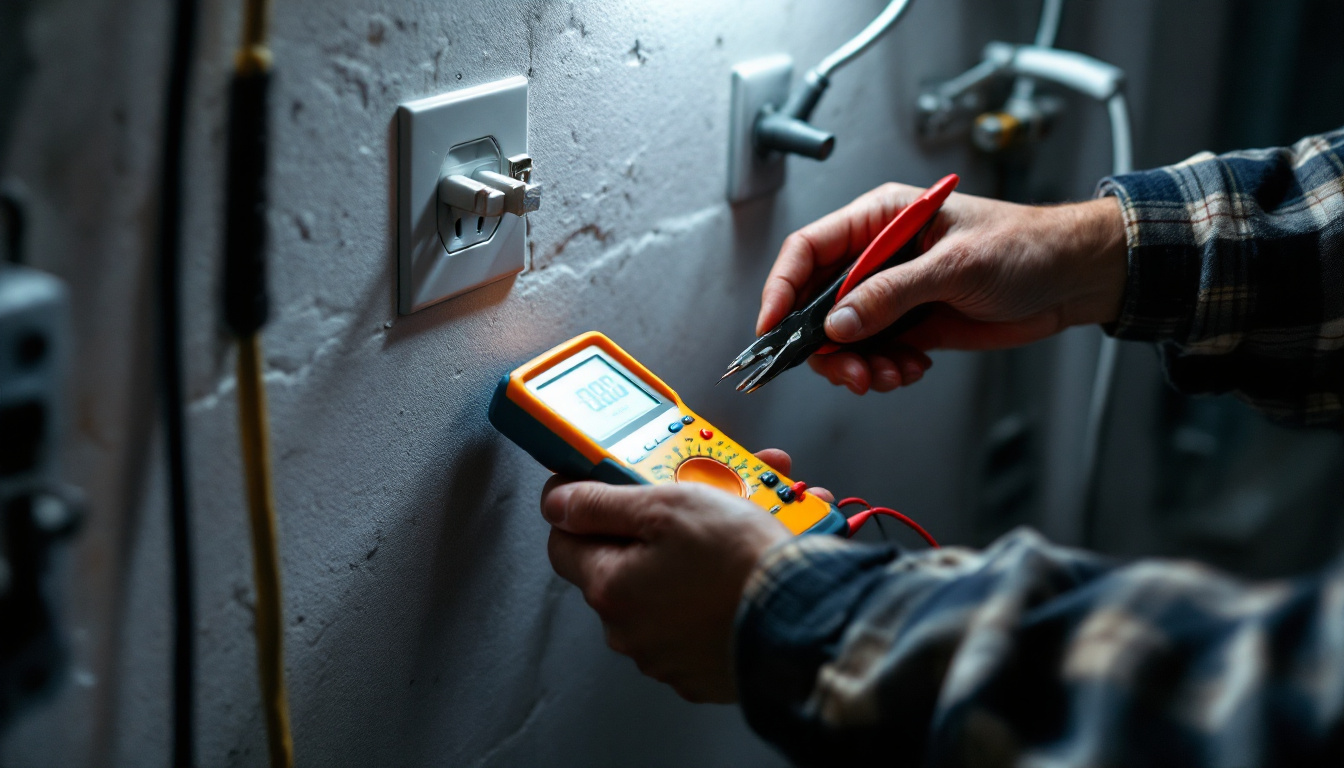
lighting projects can be intricate and challenging, especially when it comes to gray lots—those spaces that are neither fully developed nor entirely undeveloped. They often present unique lighting challenges that can lead to costly mistakes if not handled properly. For lighting contractors, understanding the nuances of these projects is essential for ensuring successful outcomes. This article will explore common pitfalls in lighting projects, offer strategies for avoiding them, and provide insights into best practices for working in gray lots.
Gray lots are typically transitional spaces that may include parking lots, undeveloped land, or areas undergoing construction. These spaces often lack the infrastructure of fully developed sites, making lighting design and installation more complex. The absence of existing lighting systems can lead to uncertainty about how to effectively illuminate these areas. Furthermore, gray lots can serve as temporary venues for events, pop-up markets, or community gatherings, which adds another layer of complexity to the lighting needs, as the requirements may change frequently based on usage.
Moreover, gray lots may have varying levels of accessibility, which can complicate the logistics of a lighting project. Understanding the specific characteristics of a gray lot is crucial for developing an effective lighting strategy that meets both safety and aesthetic requirements. The lighting must not only ensure visibility but also create an inviting atmosphere that encourages people to utilize these spaces, especially during evening hours when they might otherwise feel deserted or unsafe.
One of the primary challenges in gray lots is the lack of defined boundaries. Without clear demarcation, it can be difficult to determine where lighting should be installed. This can lead to uneven illumination, creating dark spots that may pose safety risks. Additionally, the absence of existing infrastructure can complicate the installation process, requiring additional planning and resources. The challenge is further compounded by the need to consider the surrounding environment, such as nearby buildings or natural features, which can cast shadows and affect the overall lighting scheme.
Another challenge is the potential for environmental factors to impact lighting performance. For instance, gray lots may be subject to varying weather conditions, which can affect the durability and effectiveness of lighting fixtures. Harsh weather can lead to increased wear and tear on equipment, necessitating the use of more robust materials or protective measures. Understanding these challenges is the first step in avoiding costly mistakes. Additionally, considerations such as energy efficiency and sustainability are becoming increasingly important, prompting the need for innovative lighting solutions that can withstand the test of time while minimizing environmental impact.
Effective planning and design are critical components of any lighting project, particularly in gray lots. A well-thought-out plan can help mitigate risks and ensure that the final outcome meets the project’s objectives.
When approaching a gray lot project, it is essential to conduct a thorough site assessment. This should include an evaluation of the existing conditions, potential obstacles, and specific requirements for lighting. Engaging with stakeholders early in the process can also provide valuable insights and help align expectations.
A comprehensive site assessment should encompass several key elements. First, assess the topography of the lot, as variations in elevation can affect how light is distributed. Additionally, consider the surrounding environment, including nearby structures, vegetation, and any potential sources of light pollution.
It is also important to evaluate the intended use of the gray lot. Will it serve as a parking area, a pedestrian walkway, or a temporary construction site? Understanding the primary function of the space will inform the type and placement of lighting fixtures. Furthermore, take into account the anticipated foot traffic and vehicle movement patterns, as these factors will influence the necessary brightness levels and safety considerations. Engaging local community members can also provide insights into how the space is currently used and any specific concerns they may have regarding safety and accessibility.
Once the site assessment is complete, the next step is selecting appropriate lighting solutions. This involves considering factors such as lumens, color temperature, and fixture type. For gray lots, it is often beneficial to opt for LED lighting, which offers energy efficiency and longevity.
Additionally, consider the use of smart lighting technologies that can adapt to changing conditions. For example, motion sensors can enhance safety by illuminating areas only when needed, reducing energy consumption and maintenance costs. Moreover, integrating programmable lighting systems can allow for adjustments based on time of day or specific events, creating a more dynamic and responsive lighting environment. It’s also worth exploring the aesthetic aspects of lighting, as well-designed fixtures can enhance the overall visual appeal of the gray lot, making it more inviting and functional for users. Incorporating design elements that reflect the local culture or community can further strengthen the connection between the space and its users, fostering a sense of ownership and pride in the area.
The installation phase is where many contractors encounter challenges that can lead to costly mistakes. Adhering to best practices during this stage is crucial for ensuring a successful lighting project.
One of the most important aspects of installation is ensuring that fixtures are mounted securely and positioned correctly. Improper placement can result in glare, shadows, and inadequate illumination, undermining the project’s goals. Furthermore, it is essential to follow manufacturer guidelines for installation to avoid voiding warranties or compromising safety. Additionally, taking the time to conduct a thorough site assessment prior to installation can reveal potential issues such as uneven surfaces or existing infrastructure that might interfere with the lighting design. This proactive approach can save time and resources in the long run.
Compliance with local regulations and codes is a critical consideration in any lighting project. Gray lots may be subject to specific zoning laws or safety standards that dictate the type and placement of lighting fixtures. Failing to adhere to these regulations can result in fines, project delays, or even legal issues.
Before commencing installation, familiarize yourself with local codes and obtain any necessary permits. Consulting with local authorities or industry experts can provide valuable guidance and help ensure compliance throughout the project. It’s also beneficial to keep abreast of any changes in regulations that may occur during the project timeline, as this could impact your installation strategy. Engaging with the community and stakeholders can also foster goodwill and support, which can be invaluable when navigating regulatory landscapes.
Logistics can be particularly challenging in gray lots, especially if the site is undergoing construction or is otherwise inaccessible. Effective project management is essential for coordinating schedules, resources, and personnel. Establishing a clear timeline and communication plan can help mitigate potential disruptions.
Consider factors such as weather conditions, site accessibility, and the availability of materials when developing the project schedule. Being proactive in managing these logistics can help prevent costly delays and ensure that the project stays on track. Additionally, utilizing project management software can streamline communication among team members and provide real-time updates on progress. This technology can also assist in tracking inventory levels and scheduling deliveries, ensuring that all necessary materials arrive on-site when needed. By integrating these tools into your workflow, you can enhance efficiency and maintain momentum throughout the installation process.
After installation, testing the lighting system is a critical step that should not be overlooked. This phase allows contractors to identify any issues and make necessary adjustments before the project is deemed complete.
Conducting a thorough walkthrough of the site can help identify areas that may require additional lighting or adjustments in fixture placement. It is also an opportunity to assess the overall aesthetics of the lighting design and ensure that it meets the project’s goals.
Feedback from stakeholders can provide valuable insights into the effectiveness of the lighting system. Engaging with clients, users, and local authorities can help identify any concerns or areas for improvement. This feedback loop is essential for refining future projects and enhancing overall service quality.
Incorporating feedback into the final adjustments can lead to a more successful outcome and foster positive relationships with clients and stakeholders.
Once a lighting project is complete, ongoing maintenance is essential to ensure the longevity and effectiveness of the lighting system. Gray lots, in particular, may require more frequent maintenance due to environmental factors and potential wear and tear.
Establishing a maintenance schedule can help prevent issues before they arise. This should include regular inspections of fixtures, cleaning, and addressing any damaged components promptly. By prioritizing maintenance, contractors can enhance the durability of the lighting system and reduce long-term costs.
Advancements in technology have made it easier to manage and maintain lighting systems. Smart lighting solutions can provide real-time data on performance, allowing contractors to identify issues quickly and efficiently. For example, sensors can alert maintenance teams to burnt-out bulbs or malfunctioning fixtures, enabling prompt repairs.
Incorporating technology into maintenance practices can enhance efficiency and reduce costs, ultimately leading to a more successful lighting project.
Lighting projects in gray lots present unique challenges that require careful planning, execution, and maintenance. By understanding the intricacies of these spaces and employing best practices throughout the project lifecycle, lighting contractors can avoid costly mistakes and deliver successful outcomes.
From conducting thorough site assessments to ensuring compliance with regulations and prioritizing maintenance, each step plays a vital role in the overall success of the project. By leveraging technology and engaging with stakeholders, contractors can enhance their service quality and build lasting relationships with clients.
Ultimately, the key to success in gray lot lighting projects lies in a proactive and informed approach. By anticipating challenges and addressing them head-on, contractors can navigate these complex projects with confidence and achieve exceptional results.
Ready to tackle your next gray lot lighting project with confidence? At LumenWholesale, we provide you with the high-quality, spec-grade lighting products you need at prices that make sense for your bottom line. Say goodbye to local distributor markups and hello to our unbeatable wholesale rates, complete with the convenience of free shipping on bulk orders. Our selection not only meets but exceeds industry standards, ensuring your lighting solutions are both reliable and efficient. Elevate your lighting projects by choosing LumenWholesale, where quality, affordability, and convenience converge. Explore our products now and secure the best value in wholesale lighting.

Discover how to choose the best recessed lighting bulbs to ensure your lighting projects stand the test of time.

Discover the must-have tools for lighting contractors focusing on single electrical outlet installations.

Discover how LED garage lighting can transform your space while ensuring longevity and efficiency.

Discover how the Light Reflectance Value (LRV) of paint can transform your lighting projects.